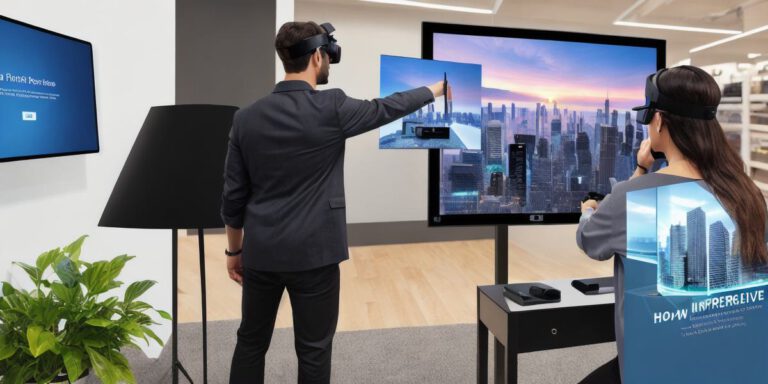Creating Memorable Brand Engagements with VR: Crafting Immersive Experiences to Connect with Customers.

Title: Creating Memorable Brand Engagements with VR: Crafting Immersive Experiences to Connect with Customers
Introduction:
Virtual reality (VR) and augmented reality (AR) are transforming the way we interact with technology, and with each other. These immersive experiences have the power to create memorable brand engagements that can help businesses connect with their customers on a deeper level. In this article, we will explore some of the key strategies for crafting these immersive experiences and how they can be used to drive engagement and build brand loyalty.
- Define your target audience:
Before you begin creating an immersive experience, it’s important to understand who your target audience is and what they are looking for in a VR or AR experience. This will help you tailor your experience to their needs and interests, making it more engaging and memorable. - Focus on storytelling:
Storytelling is a powerful tool for creating immersive experiences that connect with customers on an emotional level. By telling a compelling story through VR or AR, you can create a sense of wonder and excitement that will keep customers engaged and coming back for more. - Use interactive elements:
Interactive elements, such as quizzes, games, and puzzles, can help make your immersive experience more engaging and memorable. These elements encourage customers to interact with the brand and explore the VR or AR environment in a fun and interactive way. - Incorporate real-world experiences:
Incorporating real-world experiences into your immersive experience can help create a sense of authenticity and make it more relatable to customers. For example, if you are creating an immersive experience for a car brand, you could incorporate a virtual test drive that allows customers to explore the features and benefits of the car in a realistic way. - Use data and analytics:
Data and analytics can help you understand how customers are interacting with your immersive experience and make adjustments as needed. For example, you might use heat maps or click-through rates to determine which areas of the VR or AR environment are most engaging and adjust the experience accordingly. - Create a clear call-to-action:
A clear call-to-action is essential for driving engagement and building brand loyalty. Whether it’s encouraging customers to sign up for a newsletter, make a purchase, or simply explore the VR or AR environment further, a clear call-to-action will help guide customers towards taking the desired action. - Continuously iterate and improve:
Finally, it’s important to continuously iterate and improve your immersive experience based on customer feedback and data. By making small changes and adjustments over time, you can create an experience that is continually evolving and improving, keeping customers engaged and coming back for more.
In conclusion, creating memorable brand engagements with VR and AR requires careful planning, execution, and iteration. By focusing on storytelling, interactive elements, real-world experiences, data and analytics, clear calls-to-action, and continuous improvement, businesses can create immersive experiences that connect with customers on a deeper level and drive engagement and brand loyalty.








